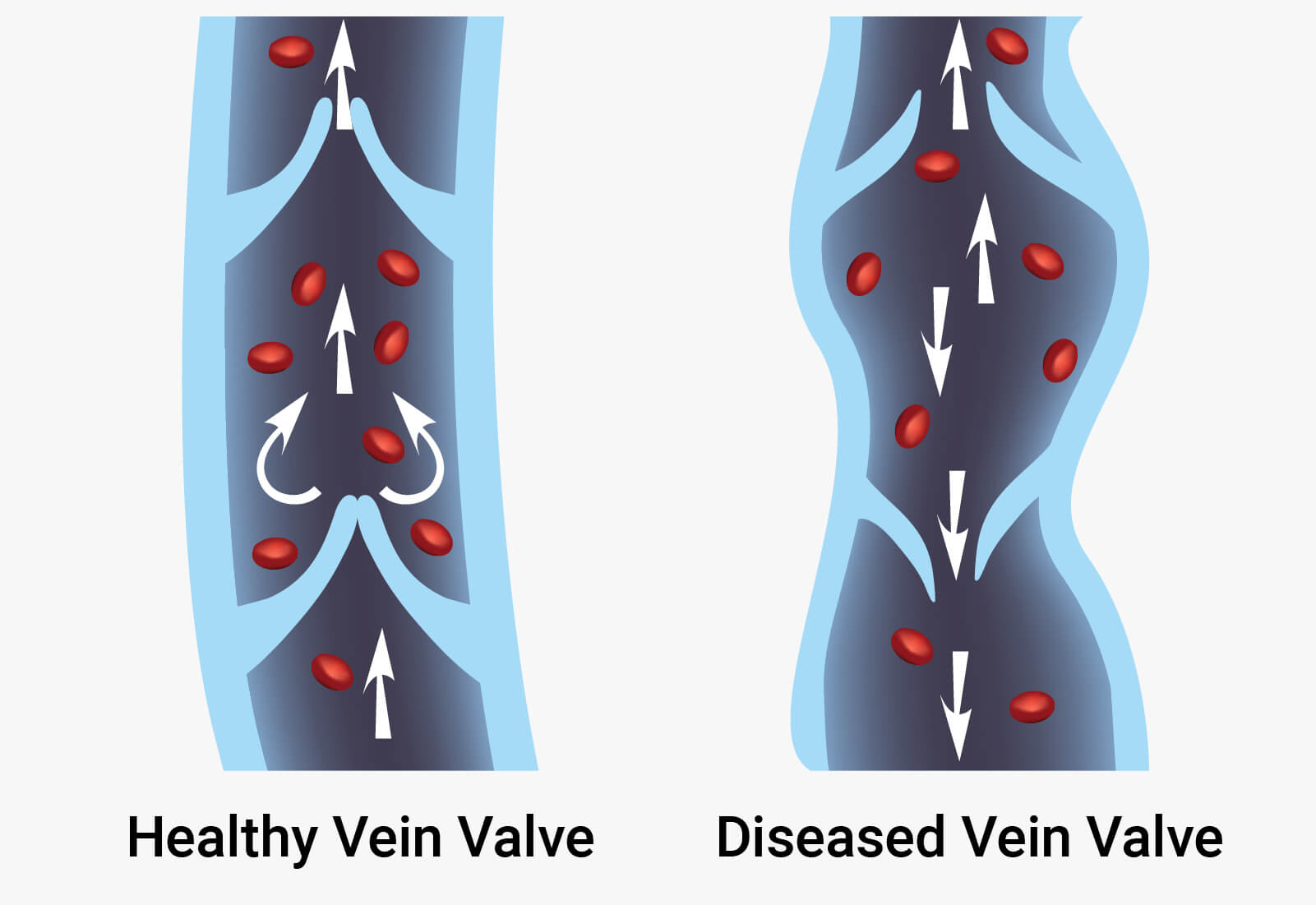Vein Disorders
Understanding Superficial Venous Reflux
There are 2 types of blood vessels, arteries and veins. Arteries carry blood from the heart and veins back to it. In your legs there are 2 systems of veins, a superficial system and a deep system.
The two communicate via “perforator veins” and blood normally flows from the superficial system to the deep system and then (using your leg muscles) is pumped back to your heart- the direction of flow is maintained by valves in your legs.
In varicose veins these valves are damaged allowing the blood to flow backwards and pool in the legs distending the veins- this is venous reflux disease..


What are Varicose Veins?
Varicose veins occur when the superficial veins widen and lengthen making them twist. They are a very common condition and usually do not cause serious medical problems. Pain, discomfort and itching are, however, common complaints.
Cosmetically they are unattractive and the raised pressure can cause collections of small “spider” veins to appear. These are areas of dilated capillaries in the skin sometimes from a central source and while they are not usually symptomatic, they can cause itching or burning sensations. Cosmetically they are unsightly and tend to look like areas of bruising.
What causes Varicose Veins?
Most varicose veins and spider veins run in families and have a genetic basis. Women are more likely to suffer from varicose veins and up to 50% of women may be affected. Hormonal factors including puberty, pregnancy, menopause, the use of birth control pills, and HRT affect the disease.
Pregnancy: It is very common for pregnant women to develop varicose veins during the first trimester. Pregnancy causes increases in hormone levels and blood volume which in turn cause veins to enlarge.
In addition, the enlarged uterus causes increased pressure on the veins. Varicose veins due to pregnancy often improve within 3 months after delivery. However, with successive pregnancies, abnormal veins are more likely to remain.
Other predisposing factors include ageing, standing for long periods of time, obesity and leg injury.
